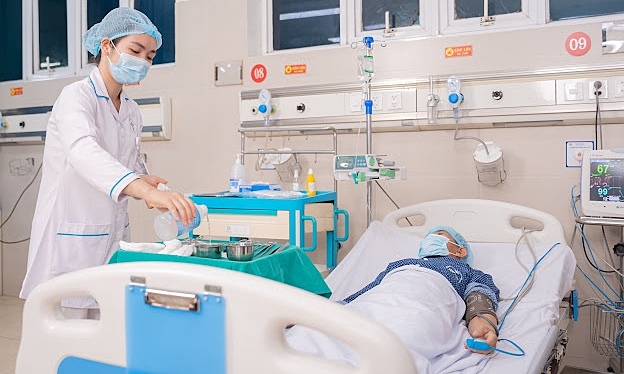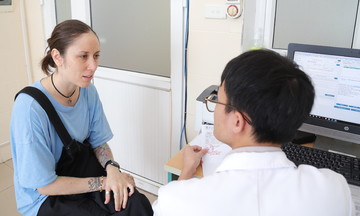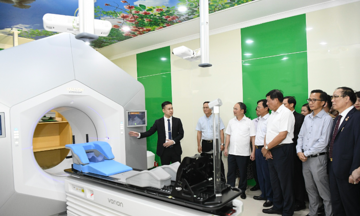On 7/9, Thanh Nhan Hospital reported the patient's recovery after 10 days of intensive plasma exchange therapy. She can now walk, and her symptoms of muscle weakness, numbness, and blurred vision have significantly improved.
The patient was admitted to the Emergency Department with dizziness, numbness in her extremities, and loss of balance that had persisted for two days. Doctors initially suspected vertigo. However, after two days of standard treatment, her condition didn't improve, and an MRI of her brain showed no abnormalities.
On the third day, her numbness increased, she became too weak to sit up, and she developed difficulty speaking and blurred vision. Upon further examination, doctors discovered additional signs of significant nerve damage, including ophthalmoplegia, ptosis, and symmetrical muscle weakness. Combined with her reports of body aches and a mild fever about 10 days prior, the medical team considered another diagnosis.
 |
The patient diagnosed with a rare disease is now stable. Photo: Hospital provided |
The patient diagnosed with a rare disease is now stable. Photo: Hospital provided
After an emergency consultation, Guillain–Barre syndrome (GBS) was suspected. This condition occurs when the immune system attacks the peripheral nerves, which can cause rapidly progressing muscle paralysis and lead to death if not treated promptly. Specialized cerebrospinal fluid and electromyography tests confirmed the diagnosis.
Thanks to the accurate diagnosis and early implementation of plasma exchange therapy to remove abnormal antibodies, the patient recovered from the critical condition.
Le Nga












